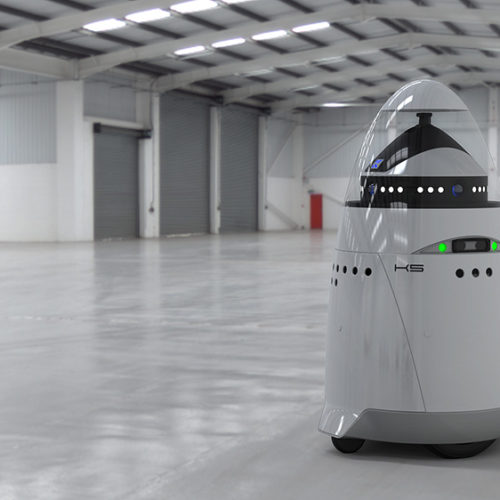Embracing Robot Co-Workers
Many industrial robots work in cages or in an area that is sectioned off. This is meant to ensure that any humans are safe, but a new breed of robots that works alongside humans is becoming more popular. A typical example of embracing robot co-workers is shown at a cold warehouse in Boston. 600 pounds of metal with a robotic arm picks up car parts that are too heavy for any human to lift. It does this with precision and no time wasted and places it on a workbench. A human worker then tightens bits and pieces of the car part, and when they have finished the robot removes it and fetches the next one.
As the pair collaborates, a roboticist, Clara Vu, walks into the robots area. This would have been unthinkable just a short time ago, as the robot would have carried on working and could possibly have injured her. This robot immediately stops though and only resumes it work when Clara has left its space.
Veo Robotics Embracing Robot Co-Workers
The warehouse is actually part of the Veo Robotics’ R&D center, which is proving that embracing robot co-workers does not mean the loss of jobs or robots taking over the human race. Co-founder of Veo Robotics, Clara says, “Robots can be bigger, stronger, faster, more precise than people, but they are not going to be more flexible, more dexterous. They are not going to have that for decades, centuries, who knows”.
Where they are improving is in sensing the world around them. Veo builds large robotic systems around a range of robotic arms. They surround them with time-of-flight cameras so that they can monitor the area around them for humans. The camera calculates distances so the robot knows exactly when it should halt what it is doing, and when it can restart.
The stopping distance varies according to the size of the robotic arm and the load it is lifting. For a large arm that his lifting heavy object it will start to slow and then stop when a human is within a meter of it, for small ones with smaller loads, the stopping distance can be just a few centimeters.
This is working well because the robot is in a structured environment carrying out repetitive tasks. For the future, however, we may need robots that can work in a less structured environment and perhaps responding to verbal commands.
Will their improvements destroy jobs? In Austria, there is a factory that makes very large and expensive generators. When one of the directors from MIT visited there he was at first struck by the lack of people, robots were doing everything. But then as he was taken to another part of the factory, it was full of people without a robot in sight. This was because humans had the dexterity to assemble parts that robots are lacking, and the foreman told him that this is likely to stay the situation for many years to come.
You might also like
BigDog
BigDog is a rough-terrain robot that walks, runs, climbs and carries heavy loads. BigDog is powered by an engine that drives a hydraulic actuation system. BigDog has four legs that
Knightscope K5
Knightscope is a Silicon Valley startup that plans to replace human security guards with robot security guards, the company has revealed two models, the Knightscope K5 and Knightscope K10.
Are Robots the Future of Therapy?
This past week, arguably the most advanced humanoid robot so far to emerge amazed an audience by cracking jokes alongside Devi Sankaree Govender of Carte Blanche at the SAP Now



